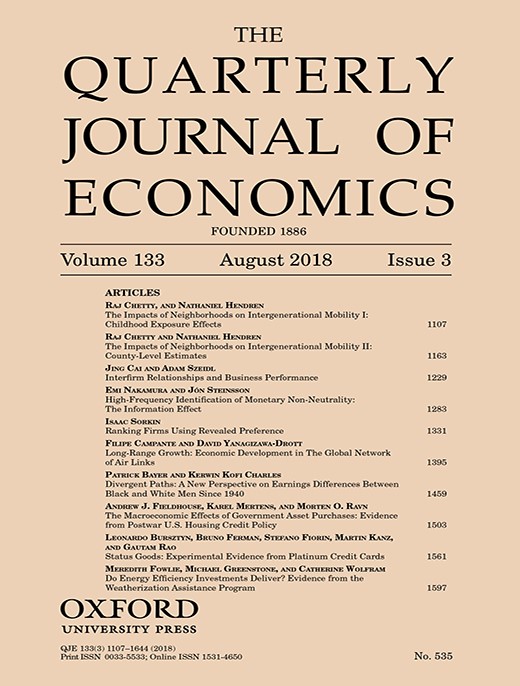-
Views
-
Cite
Cite
Meredith Fowlie, Michael Greenstone, Catherine Wolfram, Do Energy Efficiency Investments Deliver? Evidence from the Weatherization Assistance Program, The Quarterly Journal of Economics, Volume 133, Issue 3, August 2018, Pages 1597–1644, https://doi.org/10.1093/qje/qjy005
Close - Share Icon Share
Abstract
A growing number of policies and programs aim to increase investment in energy efficiency, because conventional wisdom suggests that people fail to take up these investments even though they have positive private returns and generate environmental benefits. Many explanations for this energy efficiency gap have been put forward, but there has been surprisingly little field testing of whether the conventional wisdom is correct. This article reports on the results of an experimental evaluation of the nation’s largest residential energy efficiency program—the Weatherization Assistance Program—conducted on a sample of approximately 30,000 households in Michigan. The findings suggest that the upfront investment costs are about twice the actual energy savings. Furthermore, the model-projected savings are more than three times the actual savings. Although this might be attributed to the “rebound” effect—when demand for energy end uses increases as a result of greater efficiency—the article fails to find evidence of significantly higher indoor temperatures at weatherized homes. Even when accounting for the broader societal benefits derived from emissions reductions, the costs still substantially outweigh the benefits; the average rate of return is approximately −7.8% annually.



